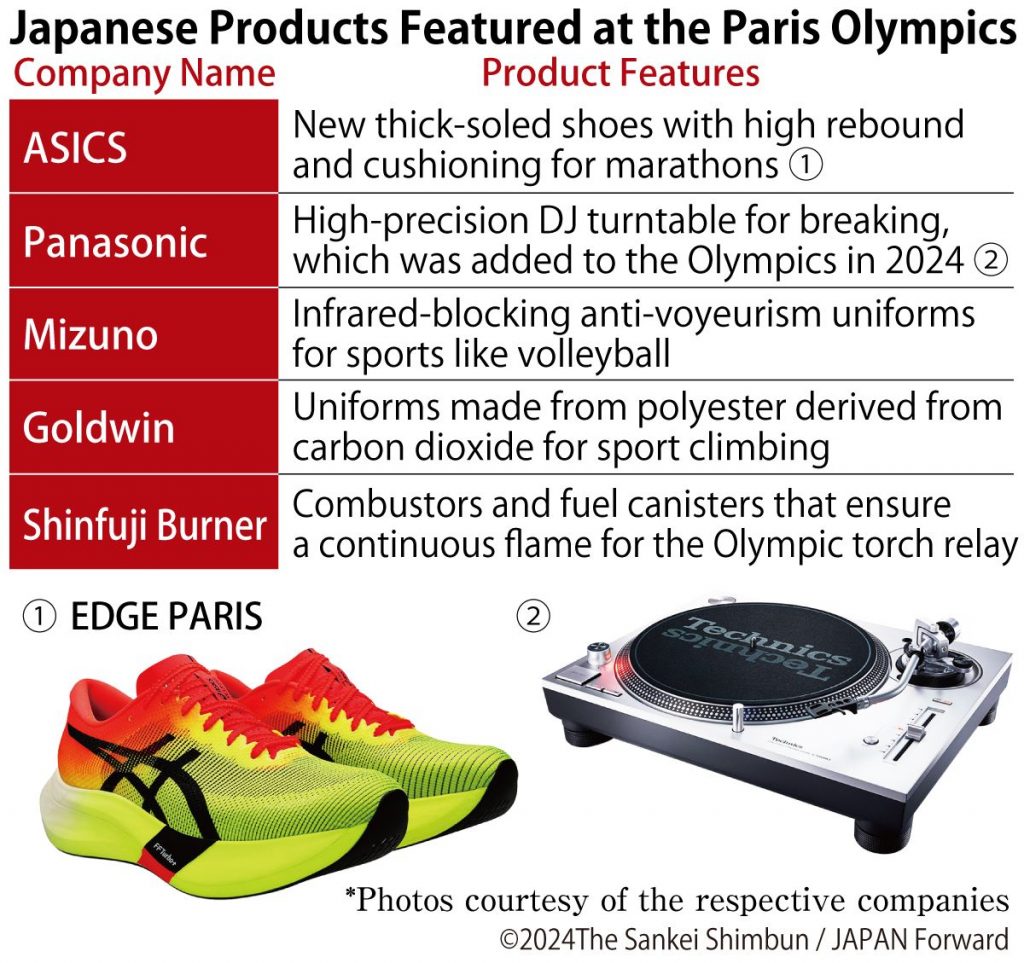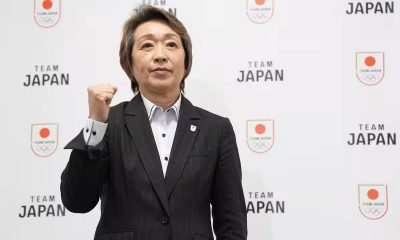
At the Paris Olympics, Japanese technology significantly enhanced athlete performance. ASICS challenged Nike's long-standing dominance in marathon footwear with its new "Edge Paris" thick-soled shoes, designed to provide superior rebound and cushioning.
Additionally, Panasonic supported the newly introduced Olympic sport of breaking, by providing high-quality DJ turntables. These innovations made a notable impact across various Olympic events.

ASICS Targets Nike's Lead
Honami Maeda, who was scheduled to represent Japan in her second consecutive Olympics, in the women's marathon on August 11 (but skipped the event due to an injury), wears ASICS's new footwear. Since Nike launched its thick-soled shoes in 2017, the brand has dominated long-distance running. This was evident at the January 2021 Hakone Ekiden. A staggering 95.7% of participants wore Nike, leaving ASICS with no representation — a severe blow to the company.
In response, ASICS launched its "Metaspeed" series in March 2021. The series started with two versions designed for different running styles. One version, the "Edge Paris," is for runners who rely on quick foot rotation, while the other, "Sky Paris," is for those who benefit from longer strides. ASICS's strategic involvement in racing aims to boost athlete performance and drive future product demand.
Furthermore, ASICS outfitted the Japanese team with official sportswear that combines comfort with sustainability, using recycled materials. This eco-friendly gear gained visibility during award ceremonies and throughout the Olympic Village.
Panasonic DJ Gear Shines
Some technological advancements not only enhanced athlete performance but were also instrumental in the evolution of the sports themselves. In breaking, where dancers competed one-on-one to DJ-driven tracks, Panasonic's DJ turntables were officially adopted.
Panasonic pioneered the direct-drive turntable in 1970, which enabled high-precision record spinning and significantly influenced DJ culture. A company representative shared their sentiments. "It's inspiring to see how DJ culture has evolved with our products, bringing breaking to the Olympic stage," they noted.
Cutting Carbon with Japanese Tech
The Paris Olympics aimed to cut its carbon footprint in half compared to the previous two Olympic Games. Japanese technology played a crucial role in achieving these environmental efforts as well.
Goldwin, a leading sportswear manufacturer, contributed by providing uniforms made from CO2-derived polyester for the Japanese and South Korean sports climbing teams. These uniforms, created under The North Face brand, showcased an innovative approach to carbon recycling.
A Goldwin spokesperson emphasized, "We aim to use the Olympics to highlight our initiatives and encourage other brands to adopt sustainable practices."
Despite the persistent rain, the opening ceremony on July 26 was notably enhanced by an "inextinguishable torch." This torch featured a combustion component and gas canister from Shinfuji Burner in Toyokawa, Aichi Prefecture. It ignited extensive discussions on social media platforms, including X (formerly Twitter).
Jun Yamamoto from the development department reflected on this achievement. "Having our advanced technologies and high-quality products showcased on an international platform has greatly boosted our confidence," he stated.
RELATED:
- New Challenges for Olympic Athletes: Keeping Out the Prying Eyes
- Tokyo Olympics Leaves Legacy of Net-Zero Emissions for Greener Future
- Paris 2024 Delivers a Riverside Extravaganza to Open the Games
(Read the article in Japanese.)
Authors: Hiroto Kuwajima, Katsufumi Sato, Gen Koganezaki, The Sankei Shimbun

Nagoya Basho Tournament Records
| Day | Opponent | Result |
|---|























You must be logged in to post a comment Login